#birch bark canoe
Photo


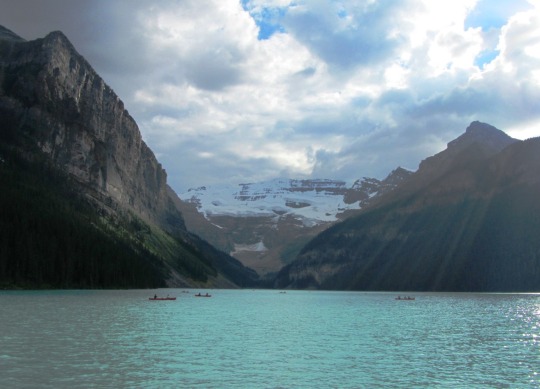



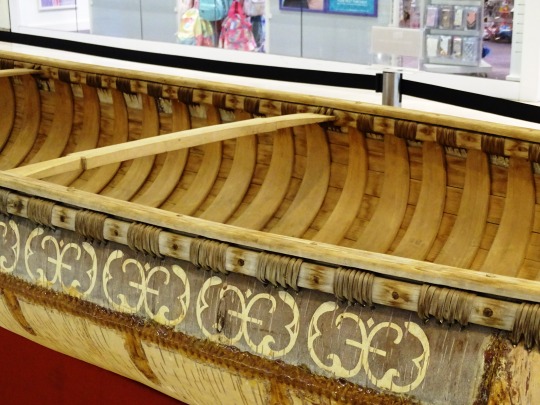
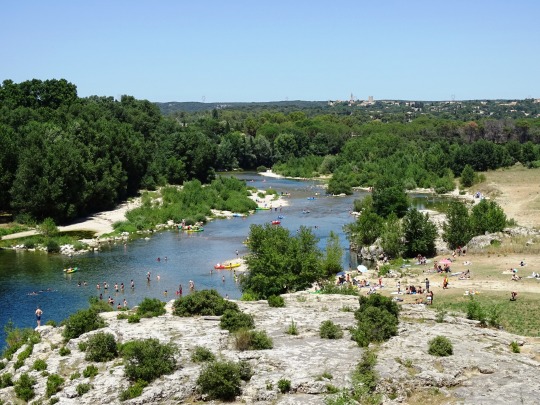
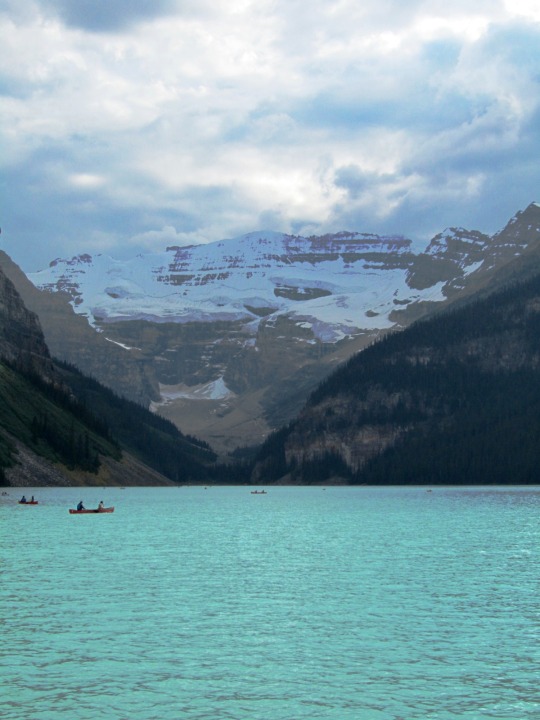

National Canoe Day
National Canoe Day is celebrated on June 26 every year. Though it is a Canadian holiday, it’s celebrated in the U.S. as well. Canoeing is both a sport and a recreational activity — one that’s relaxing and good for the environment. Wherever there is water, there are canoeists. On National Canoe Day thousands visit their favorite waterways, exploring their lakes and rivers or participating in competitive aquatic events. Canoeing is a fun activity that’s easy to learn and friendly to people across different age groups. It’s also a low-impact form of exercise, so it’s good for your health too.
History of Canoe Day
Canoes have been around for millennia and used by different cultures and civilizations throughout the ages. The oldest canoe in existence dates back to 8000 B.C. It was carved out by hand with basic flintstone tools from the hollowed-out trunk of a pine tree. Canoes predate the arrival of Europeans on the American continent. They were widely used as a method of transport, catching food, trading items, and even in warfare.
Native Americans used canoes made of birch-bark trees, tying together strips of wood with strong roots, then sealing them up with a pitch to prevent leakage. In 3500 B.C. the design of South American canoes was simpler but still effective. They made their boats from hollowed-out logs, which they expanded with heat and sharpened on both ends. This made them cut through the water faster. Around 1500 B.C. Polynesians had very elaborate, colorful canoes equipped with sails and crossbeams. They were much larger and sturdier than conventional canoes as their purpose was ocean voyages.
By the 19th century, the techniques and technology for building canoes had evolved thanks to centuries of interaction with Europeans. Canoeing became a popular activity in the Western world as a result of this. In a world when ships and railroads existed, there was no need for canoes to be utilized for maritime transportation. Instead, Europeans used them for recreational and sporting purposes. John MacGregor, an English explorer who popularized canoeing in the United States and Europe, created the Royal Canoe Club of London in 1866. This was followed by the “American Canoe Association” formed in 1880. In 1946, the International Canoe Federation was founded, acting as the umbrella body for national canoe organizations worldwide.
Canoe Day timeline
1924 Canoeing Joins the Olympics
Canoeing debuts as an Olympic demonstration sport at the Paris Olympics.
1944 The Introduction of Aluminum Canoes
William Hoffman, Vice President of Grumman Aircraft Engineering Corporation, comes up with an idea for a lightweight canoe made of aluminum.
1955 The Discovery of the Oldest Canoe
The ‘Pesse’ canoe — considered the world’s oldest known boat — is discovered in the village of Pesse in the Netherlands.
1987 The Discovery of the Second-Oldest Canoe
The ‘Dufuna’ canoe — the second oldest canoe — is discovered by a cattle herdsman in Nigeria while he is digging a well.
Canoe Day FAQs
What is a canoe person?
A canoe person or canoeist is someone who paddles a canoe.
How many miles can you canoe in a day?
You can canoe for roughly 20 miles in one day, factoring in things like speed and mileage. This adds up to about seven hours of non-stop paddling for an entire day, with breaks in-between.
How difficult is it to canoe?
Canoeing is not a difficult task. Most people learn how to paddle solo canoes in an hour or two.
Canoe Day Activities
Go for canoe lessons
Attend a canoe race
Buy a canoe
Learning how to row a canoe is a great way to celebrate National Canoe Day. It’s not a difficult skill to pick up at all, it just takes a bit of practice and dedication. You can learn with a solo canoe, a two-person canoe for someone special, or a four-person canoe for larger groups.
Whitewater canoeing is an exciting sport. As you watch the races you’ll quickly realize that it takes great skill to navigate rapids without flipping over or crashing. As a spectator, you get to experience the thrill with none of the risks.
Buying a canoe can prove quite convenient if you live near rivers or lakes. This way you can celebrate National Canoe Day each year by taking your craft out for a spin on the water. Besides, canoeing is a peaceful, relaxing activity that keeps you in shape.
5 Interesting Facts About Canoeing
The longest canoe trip
Florida has the eldest canoes
Hungarians are canoeing champions
Canoes are different from kayaks
Canoes were used during WW2
In 1980, Don Starkell and his teenage sons paddled from Winnipeg, Canada to the Amazon River, covering more than 12,000 miles over two years.
Florida has more than 400 old, dug-out canoes preserved in their original state — the highest number in the world.
Hungary has won 41 medals in canoeing since 1980, with 18 of them being gold medals.
Canoes have open decks with rowers sitting or kneeling inside the canoe, while kayaks have closed decks with a hole cut in the center where the rower sits.
During Operation Frankton, canoes were used to transport commandos to raid ships in the French port of Bordeaux, which was under German occupation at the time.
Why We Love Canoe Day
It highlights an obscure sport
It teaches us to appreciate the environment
It keeps canoeing relevant
Canoeing is one of the lesser-known watersports. It doesn’t get much mainstream coverage compared to other events like swimming, sailing, or diving. National Canoe Day brings awareness to this activity and its competitive watersports variants.
Whether you’re doing it recreationally or competing in an event, canoeing takes place outdoors. On National Canoe Day, we get in touch with mother nature and deepen our appreciation for the environment.
National Canoe Day doesn’t just celebrate one of the oldest forms of transport and recreation. It also keeps the conversation on this activity going. Every year on June 26, more people get to know about canoeing and its history.
Source
#Wabanki Canoe#Birch Bark Canoe#native american#Bangor#Maine#USA#summer 2018#original photography#travel#vacation#history#Gardon River#France#2021#2012#Lake Louise#Banff National Park#landscape#countryside#tourist attraction#landmark#indoors#outdoors#National Canoe Day#NationalCanoeDay#26 June#Alberta
6 notes
·
View notes
Text
A Blue Canoe and Turtle
Native American symbolism in a canoe and a turtle on a rich blue background. An ideal format for beach homes, lake house or any space that loves the great outdoors!
GET THE CANOE HERE!
GET THE TURTLE HERE!

View On WordPress
#aqua and blue#art#beach#birch bark canoe#birchbark canoe#blue art#canoe#canoeing#canoes#Colorful Art#native american art#native american decor#native american symbols#prints#sharon cummings#sharon cummings art#turtle#turtle art#turtle paintings
0 notes
Quote
Give me of your bark, O Birch-tree!
Of your yellow bark, O Birch-tree!
Growing by the rushing river,
Tall and stately in the valley!
I a light canoe will build me,
Build a swift Cheemaun for sailing,
That shall float upon the river,
Like a yellow leaf in Autumn,
Like a yellow water-lily!
Henry Wadsworth Longfellow, The Song of Hiawatha, VII. Hiawatha’s Sailing
#av#writings#Longfellow#Henry Wadsworth Longfellow#birch#canoe#bark#nature#yellow water lily#Hiawatha#The Song of Hiawatha#Hiawatha’s Sailing
13 notes
·
View notes
Text
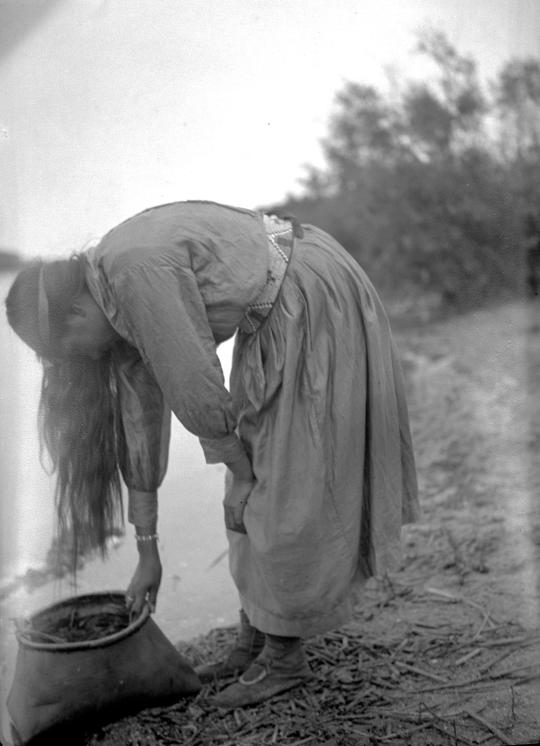
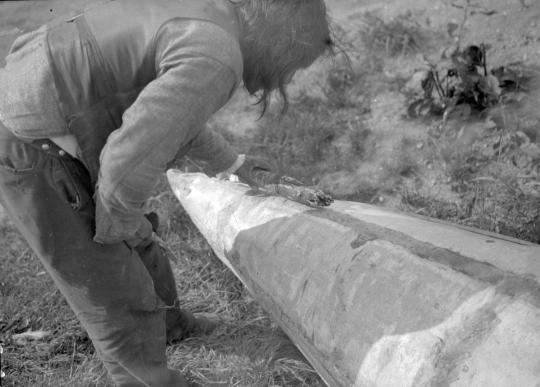
Paul Coze. Young Cree Woman With Birch Bark Container - Waterhen River, Northern Saskatchewan, circa 1928- 1934.
Paul Coze. Repairing a Crack in a Birch Bark Canoe with Hot Resin - Waterhen River Cree - Northern Saskatchewan, circa 1928 - 1934.
68 notes
·
View notes
Text
I’m very curious what type of boat Tolkien was picturing with the elven-boats, because this seems like something ppl will have solved, and I’m particularly curious what Tolkien imagined were historically accurate boats. To me, they sound exactly like canoes — but with broad paddles (better for racing or whitewater than the thinner paddles used for distance) — right down to the “uhhHHH please practice getting in and out of them first” advice from the elves, and the way it’s three to a boat (bow, stern, and center).
There were historical canoes in the European half North Sea as well as the Americas half, but the literature tends to gloss over that. Are they birch bark? Dugout? Not a fucking canoe? Elf boat mystery… 😔😔🛶
56 notes
·
View notes
Text
Remember Your Asemaa
There was once a boy. He lived by a creek with his grandmother. In the early evenings, he would go out before the sun set to look for things.
His grandmother had a gift. She was a maker, and she always transformed anything he brought home to her into something magical.
His grandmother taught him from very young the importance of laying your asemaa down as an offering, to say miigwetch for what you are taking from the land.
One time, the boy went out looking, offered his tobacco, and brought home a big partridge miigwan. He gave the feather to ookomisan, and she made a beautiful dreamcatcher to hang above his bed by the window.
Another time, he found a nice birch tree. He put down some asemaa and began peeling the bark. When he got home, his grandmother spent the whole weekend weaving a strong basket so they could pick more miinan.
This time, though, the boy went out and found a short, smooth piece of driftwood. As he was examining it, something else down by the water caught his eye. A small, rounded rock with a hole in the center. The boy, now excited, took the piece of wood and the rock back with him in a hurry as the sun was beginning to set.
The next morning, his grandmother admired the piece of wood he brought back before deciding what it would become. She began working and the boy sat in the corner playing with the small rock he found. He looked up, and saw a transformation take place before his very eyes. His grandmother tossed the whittled bits from her lap into the fireplace and came over to the boy with mitigo-jiimaan. He took it from her and they headed outside to the creek to test it out.

He placed it down onto the water. It worked! It could float! The boy jumped up and hugged his grandmother to thank her. The boy stayed outside awhile to play with his little wooden canoe.
The next morning, the boy's grandmother was upset. She explained that when she woke up she found the small canoe she had worked so hard making had been broken in half.
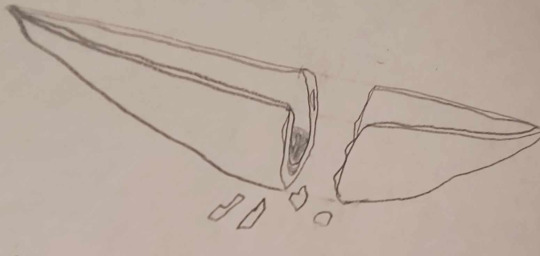
The boy begged his grandmother to believe that he would never break it. She thought for a moment, and asked him to calmly explain what happened the day before. When he was done, his grandmother instantly knew what had gone wrong. He had forgotten to offer tobacco. She sent the boy out with some asemaa in one half of the broken canoe, and some maple taffy in the other to offer up to memegwesiwag. She told him that the little people would accept his apology if he made sure to always offer his tobacco.
Early the next morning, the boy went to grab his special rock to take with him to go see what had happened to his canoe down by the creek. It was gone! The boy raced down to the water, hoping for some good news. His canoe wasn't there anymore, either!
The boy ran back home to his grandmother and started crying. She hugged him and told him to calm down, and that she would make him some cedar tea. The boy went to his corner by the fireplace, and couldn't believe his eyes. There was his now-fixed mitigo-jiimaan, complete with tiny, ornate carvings along where the crack had been. Inside the canoe, he found his rock turned into a necklace. His grandmother told him that he should wear it every day, to remind him to always remember his asemaa.

Chi-miigwech for reading and sharing my story.
asemaa: tobacco
miigwetch: thank you
miigwan: feather
ookomisan: [his] grandmother
miinan: blueberries
memegwesiwag: little people (dwarf spirits)
mitigo-jiimaan: wooden canoe
#writblr#indigenous#indigenous heritage#native#indigenous stories#short stories#métis#anishinaabe#anishinaabemowin#ndn#indigenous writers
25 notes
·
View notes
Text
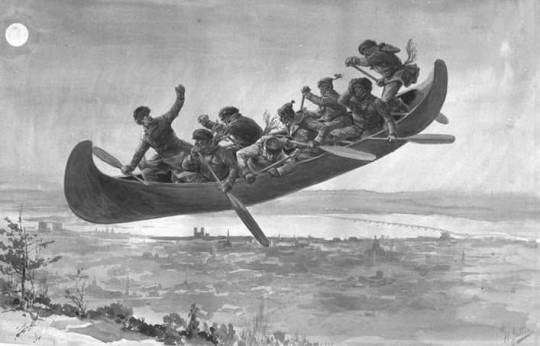
Henri Julien ''Birch bark Canoe that Flies'' pen & ink Christmas in Quebec...'Bewitched Canoe'.. appears to be over St. Louis Bay, Duluth
7 notes
·
View notes
Text
The Mysterious Peterborough Petroglyphs

The Peterborough Petroglyphs are the largest collection of ancient rock carvings in all of North America, made up of over 900 images carved into crystalline limestone located near Peterborough in Ontario, Canada.
Designated a National Historic Site of Canada in 1976, local indigenous people believe that this is an entrance into the spirit world and that the Spirits actually speak to them from this location. They call it Kinoomaagewaapkong, which translates to "the rocks that teach."
The petroglyphs are carved into a single slab of crystalline limestone which is 55 metres long and 30 metres wide. About 300 of the images are decipherable shapes, including animals, humans, shamans, solar symbols, geometric shapes and boats.
It is generally believed that the indigenous Algonkian people carved the petroglyphs between 900 and 1400 AD. But rock art is usually impossible to date accurately for lack of any carbon material and dating artfiacts or relics found in proximity to the site only reveals information about the last people to be there. They could be thousands of years older than experts allow, if only because the extensive weathering of some of the glyphs implies more than 1,000 years of exposure.
There are some other mysteries surrounding these remarkable petroglyphs. The boat carvings bear little resemblance to the traditional boat of the Native Americans. One solar boat -- a stylized shaman vessel with a long mast surmounted by the sun -- is typical of petroglyphs found in northern Russia and Scandanavia. A Harvard professor believes the petroglyphs are inscriptions (and maybe even a form of written language) left by a Norse king named Woden-lithi, who was believed to have sailed from Norway down the St. Lawrence River in about 1700 B.C., long before the Greenland Viking explorations.
Another vessel depicted in the petroglyphs is a large ship with banks of oars and figure-heads at bow and stern. There is a large steering oar at the stern, a necessary feature only for vessels that are 100 feet or more in length. However, the Algonkian people who inhabited the region never built anything more seaworthy than a birch-bark canoe or a dugout. Even reluctant archaeologists admit that the ships "do not look like real Algonkian canoes" but steer away from any controversial conclusions about pre-Columbian visitors by speculating that the vessels are simply a shaman's idea of magical canoes that travel the universe.
Another peculiarity is the figure-heads at bow and stern which resemble birds. The same design can be seen in Etruscan repousse gold work of the 9th century BC. The bird-headed ships were portrayed 200 years earlier, when Egyptian artists carved their images into the walls of Pharaoh Ramses IIIs "Victory Temple" in the Valley of the Kings.
Yet another mystery is the presence in the petroglyphs of a tall figure or 'god' which stands with arms akimbo and with a halo radiating rays, presumably from the sun. Cowering before him are two minute humble humans in attitudes of supplication. Scientists think the figure may represent a sun god but there doesn't exist any known cases of sun worship among the indigenous people of the region.
Some historians and researchers believe there is more to the petroglyphs than meets the eye. Some maintain that they are in fact a sky map of the heavens based on European tradition from 3100 BC. Evidence includes four signs which are the same as those found for the identical astronomical position at Lewes, England, leading to a possible speculative connection between the Peterborough petroglyphs and the megalithic people of Ancient Britain.
So the petroglyphs of Peterborough remain an intriguing riddle, a sort of code to which the key is still missing.
14 notes
·
View notes
Text
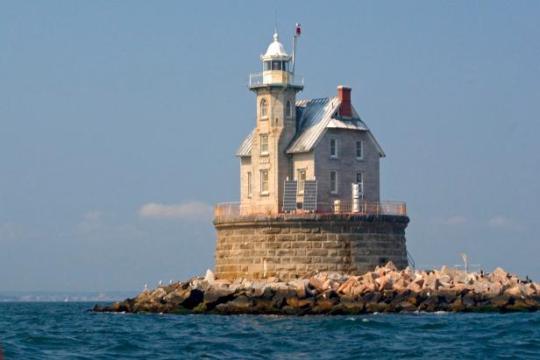
RACE ROCK LIGHTHOUSE
SOUTHOLD, NY
It seems that ghosts like to hang out in lighthouses. The violent deaths from these disasters could leave behind a spiritual residue or life force that lingers where it happened.
According to Native American lore, Race Rock Reef was once an island. Because of the swift currents running up to six knots in the Race and the sharp rocks that could tear out the bottom of their birch bark canoes the Indians avoided it. They believed the place was haunted and as sea levels have risen the island has disappeared beneath the waves.
Many members of the Coast Guard have claimed to hear disembodied whispers, laughing, voices and even yelling. Some have been touched, poked, or pushed by these phantoms and refuse to return to this property. Unexplainable footsteps and the sounds of running water have also been experienced. Many passing boats claimed they have witnessed a shadowy presence of a man in the tower as the light passed over them.
#RACE ROCK LIGHTHOUSE#haunted lighthouse#ghost and hauntings#paranormal#ghost and spirits#haunted locations#haunted salem#salem massachusetts
13 notes
·
View notes
Text
The Chenoo With An Icy Heart pt. 2
Part 1
Chenoo was now part of the family, and would go out hunting. He and the husband often went out to hunt giant beasts of legends. If it started to get dark while they were still a long way from home, Chenoo would give the husband a piggy back ride and run the rest of the way home. That way the hunter’s wife never had to worry about her family being safe.
However one day, Chenoo sensed his wife approaching. He was sure she would be angry about his change back into a human. She would with fight him and surely tear him apart, as Chenoo was no longer strong enough to defeat her. He asked his daughter-in-law to bring him the bag he had brought with him. She was to look inside, and if what she saw displeased her- she was to throw it away and instead bring the smaller bag inside it.
The hunter's wife got the back, and saw inside was human remains. If Chenoo ate them again, he would return to being a full Chenoo, and all the strength and horror that involved. Instead the woman threw them away, and brought the smaller bag. Inside this bag was a horn from a horned serpent. Chenoo gave the horn to his son-in-law; and told him to wait for he called for help. If everything worked out right, this might just save Chenoo’s life.
The couple hid, as the Chenoo wife approached. She was fierce and violent, and shouted horrible threats- then the two battled. Mountains tumbled, forests were knocked down as the two wrestled. Chenoo cried for help; and his son-in-law jumped into the fray. He was ordered to stab the serpent horn into her ear. When he did so, it magically grew- sprouting out the other side of her head, embedding itself into the ground.
The now dead Chenoo woman had to be hacked into smaller pieces- a difficult task as Chenoo bones are stronger than hard wood. Each piece had to be burned to ash, less the flesh turn into a new Chenoo. The last piece was the heart, which was made of the hardest of ice. They had to carefully chip the pieces until they could melt the whole thing. It was a long task, but they finished by the time spring rolled around.
The couple decided it was time to return to their tribe in the Southeast. They made themselves a canoe out of birch bark, and Chenoo a canoe out of moose skins. Chenoo always took the lead; this gave him time to prepare a place for them all to spend the night.
However the further they got, the weaker Chenoo became. He shrank in size, and slowly turned back into a regular sized old man. By the time they reached the tribe, all of Chenoo's old wounds had healed, but he was terribly sick. Part of him was still a creature of the Northern ice, and the warmth of the South was killing him- though he refused to return to the way he had been. As he died, he thanked his daughter-in-law. The last bit of cold left him as a grateful tear drop. His passing was honored, no different than an honored elder of the tribe.
The End
Notes: The only thing I changed was the ending, where a black robe taught Chenoo about religion and saved his soul. It didn’t feel right. The ending I did is inspired by Hans Christian Andersen’s Snow Queen. It was the only way I could think of depiction how the kindness the couple showed warmed his heart to the point that he completely returned to being human by the end.
5 notes
·
View notes
Text
Septidi 7 Germinal an CCXXXII
(Mardi 26 mars 2024 / Tuesday, March 26th, 2024)
🇨🇵 Texte en français et en anglais / Text in French and English 🇬🇧/🇺🇲


Le calendrier républicain, adopté pendant la Révolution française, était une tentative de rompre avec le passé monarchique et catholique en instaurant un système de mesure du temps basé sur les valeurs républicaines et agricoles. Chaque jour du calendrier républicain était dédié à une plante, un animal, un outil ou un événement symbolique, reflétant ainsi les idéaux de la Révolution.
Le mois de Germinal dans le calendrier républicain français représente le renouveau et la vitalité de la nature au printemps. Du 20 mars au 19 avril, Germinal est le mois où la terre se réveille de son sommeil hivernal, où les bourgeons éclosent et où les premières fleurs colorent les paysages. Il incarne le début de la saison des semailles et le travail de la terre, symbolisant ainsi l'espoir et la promesse d'une nouvelle récolte. Germinal rappelle également les idéaux républicains de liberté, d'égalité et de fraternité, en invitant chacun à contribuer à l'essor de la société et à cultiver un avenir meilleur.
La journée du 7 Germinal est dédié au Bouleau, un arbre répandu dans les régions tempérées de l'hémisphère nord. Le Bouleau est souvent associé à la renaissance de la nature au printemps, car il est l'un des premiers arbres à bourgeonner après l'hiver. Sa silhouette élancée et son écorce blanche caractéristique en font un symbole de pureté et de renouveau.
Le Bouleau possède une riche symbolique à travers les cultures du monde entier. Dans de nombreuses traditions, il est considéré comme un arbre sacré, symbole de purification et de protection.
Son écorce a été utilisée depuis des siècles pour fabriquer des canoës, des conteneurs et même du papier. Ses feuilles et ses bourgeons sont également utilisés en phytothérapie pour leurs propriétés médicinales, notamment pour leurs effets diurétiques et anti-inflammatoires.
Dans l'esprit républicain, le Bouleau incarne des valeurs telles que la liberté et l'égalité. Comme un arbre qui pousse librement dans la nature, il symbolise la liberté individuelle et la capacité à s'élever au-dessus des obstacles. De plus, sa présence dans les forêts rappelle l'importance de préserver et de protéger notre environnement naturel, une responsabilité partagée par tous les citoyens.
***
The Republican calendar, adopted during the French Revolution, was an attempt to break with the monarchical and Catholic past by establishing a system of time measurement based on republican and agricultural values. Each day of the Republican calendar was dedicated to a plant, an animal, a tool, or a symbolic event, thus reflecting the ideals of the Revolution.
The month of Germinal in the French Republican calendar represents the renewal and vitality of nature in spring. From March 20 to April 19, Germinal is the month when the earth awakens from its winter slumber, when buds open, and when the first flowers color the landscapes. It embodies the beginning of the sowing season and the work of the land, symbolizing hope and the promise of a new harvest. Germinal also recalls the republican ideals of liberty, equality, and fraternity, inviting everyone to contribute to the development of society and to cultivate a better future.
The day of 7 Germinal is dedicated to the Birch, a tree widespread in the temperate regions of the northern hemisphere. The Birch is often associated with the rebirth of nature in spring, as it is one of the first trees to bud after winter. Its slender silhouette and characteristic white bark make it a symbol of purity and renewal.
The Birch holds rich symbolism across cultures worldwide. In many traditions, it is considered a sacred tree, symbolizing purification and protection.
Its bark has been used for centuries to make canoes, containers, and even paper. Its leaves and buds are also used in herbal medicine for their medicinal properties, particularly for their diuretic and anti-inflammatory effects.
In the republican spirit, the Birch embodies values such as freedom and equality. Like a tree that freely grows in nature, it symbolizes individual freedom and the ability to rise above obstacles. Furthermore, its presence in forests serves as a reminder of the importance of preserving and protecting our natural environment, a responsibility shared by all citizens.
#calendrier#calendrier républicain#calendrier républicain français#calendrier révolutionnaire#calendrier révolutionnaire français#france#français#révolution#french revolution#arbre#tree#trees#arbres#bouleau#birch#révolution française#french#french republic#french calendar#révolutionnaires#nature#forêt
2 notes
·
View notes
Text
The Lazy River
Colorful canoe on a lazy collage blue river. Another piece created for The Indigenous Diabetes Health Circle. A great piece for a cabin, farmhouse or child’s room. Great for the outdoor lover or a man cave. Would look beautiful in any home or office space!
GET IT HERE!

View On WordPress
#art#birch bark canoe#birchbark canoe#canoe#canoeing#canoes#Colorful Art#colorful landscape#kayaking#landscape art#landscape painting#native american#native american art#native american decor#prints#sharon cummings#sharon cummings art
1 note
·
View note
Text
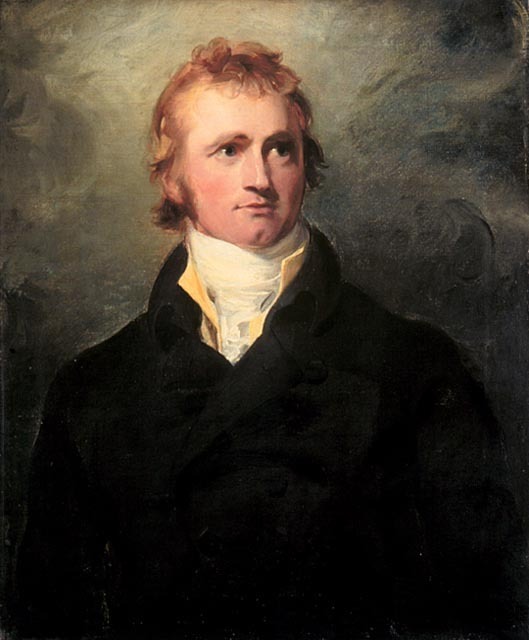
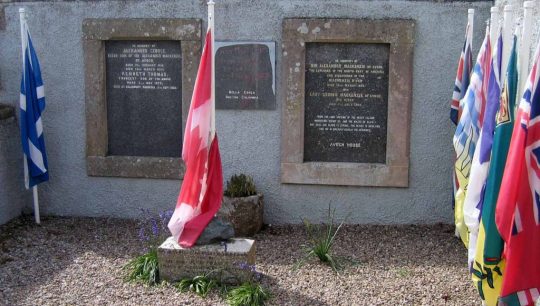

12th March 1820 saw the death of Alexander Mackenzie (Alasdair MacCoinnich), the explorer of western Canada.
Alexander Mackenzie is recognised as leader of the first European expedition to cross the North American continent from the Atlantic to the Pacific, north of Mexico. Because of Mackenzie’s success the rich coastal territory we know as British Columbia today, is part of Canada. If he had been unsuccesful, it could be argued that British Columbia would probably have belonged to another country. Mackenzie was only 29 years old when he and his men made the extraordinary overland journey to Bella Coola.
Alexander Mackenzie was born in Stornoway on the Isle of Lewis in the Western Isles of Scotland in 1764. He emigrated with his father to New York at the age of 10 years. When he was 15 years old he entered the service of a Montreal firm engaged in the fur trade. At the age of 20, he obtained a share in the business and became a trader in the West. When he was 24 years old, he was put in charge of trade in the Athabasca region and settled at Fort Chipewyan on the South shore of Lake Athabasca, from here he staged two expeditions; one to the Arctic Ocean in 1789, and another to the Pacific Ocean in 1793.
When MacKenzie was 25 years old he set off to find the Pacific Ocean, but realised his lack of navigation skills was a massive handicap to an explorerer. Sir-Alexander-MacKenzie4.jpgSo decided to put this right by spending the following winter in England studying navigation, cartography and astronomy.
In 1792, at the age of 28 years, Alexander Mackenzie set off a second time from Fort Chipewyan, crossing the Rockies through the pass that bears his name, with canoes and voyageurs (people who engaged in the transportation of furs by canoe), the party consisted of himself, his cousin Alexander Mackay, six voyageurs and two Indians as hunters and interpreters. The 26 foot birch bark canoe, was only paper thin but it carried ten men and three thousand pounds of gear.
During the journey they came across Indians who had not previously seen white men, but had some iron which they had procured by trade with other natives who had journeyed a great length to the sea. The Indians told Mackenzie of the route from the Fraser River up the West Road River ( Blackwater River ) to the Bella Coola River and the sea, the first commercial overland route in British Columbia. Without the guidance of Indians, it is unlikely that Mackenzie would have been able to reach the Western Sea.
Mackenzie found the Natives dependent on the salmon runs and very superstitious so as not to displease the Salmon Gods. He was truly amazed with their boat handling techniques, they effortlessly poled their way down river through columns of water and the tallest trees Mackenzie had ever seen.
Mackenzie learned of hostile natives, but had quite a reputation for strength and fierceness which his crew respected and the voyageurs pleaded with Mackenzie to head back. “I have work to do here,” Mackenzie replied. “When it is finished we will go back, and not before.” Mackenzie, however was becoming apprehensive and commanded his men to load the canoe ready for an immediate departure. He managed to get an astronomic reading.
At four thirty the next morning they had paddled to Porcupine cove and a few hours later they pulled the canoe up on the beach at the Bella Coola village. The explorers proceeded up river, being received hospitably at the numerous villages.
The Nuxalk gave them all the smoked salmon they wished to carry and they set out on the trail up the mountain. Every man of Friendly village accompanied them for the first hour, then parted from them with signs of regret. That night the explorers were delighted in the feeling of being almost out of danger and well on their way homeward.
A man of extraordinary physical strength, determination and perseverance, Mackenzie’s route to the Pacific proved too difficult for others to follow, but this does not diminish the value of his great 117 day expedition across Wild America.
In 1801 the journals of his exploratory journeys were published, he served in the Legislature of Lower Canada from 1804 to 1808.
In 1802 Mackenzie was knighted Sir Alexander Mackenzie by King George III, and recognized as leader of the first European expedition to cross the North American continent from the Atlantic to the Pacific north of Mexico. Had Mackenzie failed to complete his epic journey across the continent to the Pacific Coast perhaps this rich coastal territory we know as British Columbia would probably belong to a country other than Canada. Mackenzie was only 29 years old when he and his men made the extraordinary overland journey to Bella Coola.
In 1812, he married and returned to Scotland. Mackenzie died on this day in 1820 of Bright’s disease (kidney disease as we know it today), aged 56. He is buried in Avoch, on the Black Isle, Ross and Cromarty.
His grave is in Avoch church yard, the only grave marked with flags, it is open all year round for those who wish to visit and pay their respects to a great adventurer.
11 notes
·
View notes
Text
Rereading The Terror
Chapter Two: Franklin
Franklin reminisces specifically about dividing his men up and abandoning them on his previous failed expedition - “Franklin had dazedly divided his troop into three groups and left the other two bands to survive or die on their own.”
Another horrendous passage sees him comfort himself with the thought that technically, only one Englishmen died - “Only one real white man” - because clearly any other kind isn’t real to him. Ugh.
There’s an interesting little titbit about Franklin not being the first choice in his personal life too - he reads Lady Jane’s old diaries and finds her mourning on the day a previous suitor of hers marries.
Also some absolute top-notch hubris and foreshadowing and general dumbassery - “Out of his own pocket he’d provided enough supplies to feed the sixteen men for one day. Franklin had assumed the Indians would then hunt for them and feed them adequately, just as the guides carried his bags and paddled his birch-bark canoe.”
Franklin likes his beef “rare enough to bleed at the touch of the carving knife”. Funny, that.
And last but not least, there are two other quite gender-specific references relating to death and doom that I find quite interesting.
The chapter closes with that famous story of Lady Jane draping the Union Jack over Franklin as he sleeps only for him to awaken horrified at the implications of it.
He also compares the Arctic Council to Macbeth’s witches at one point - controlling fate, portending doom, but most interestingly to me, specifically female.
#The Terror#The Terror AMC#Observations#Random Observations#Meta#Rereading the Terror#Sir John Franklin#Lady Jane Franklin
14 notes
·
View notes
